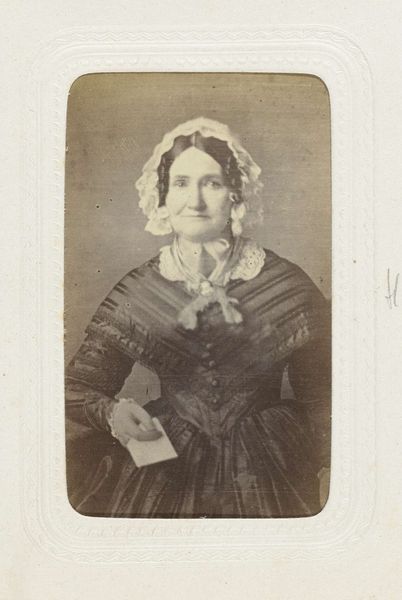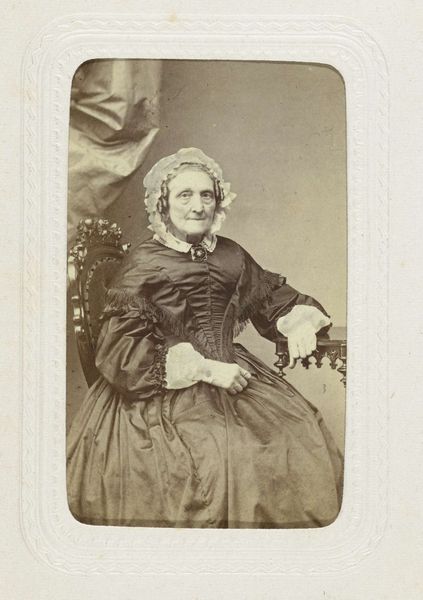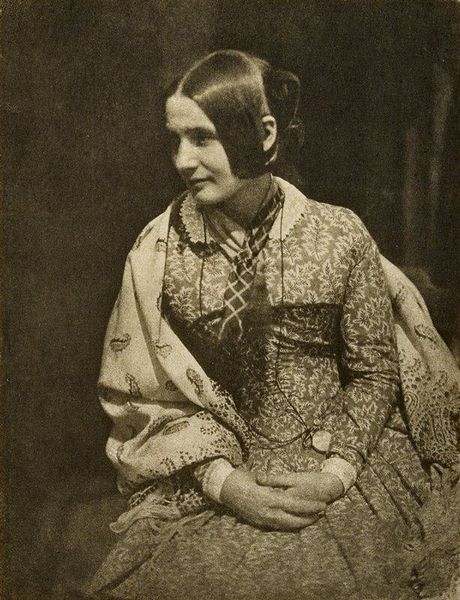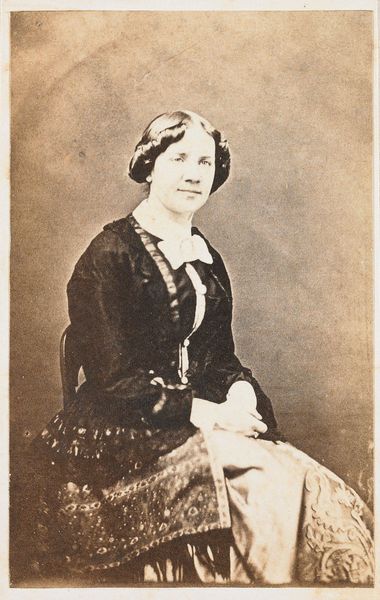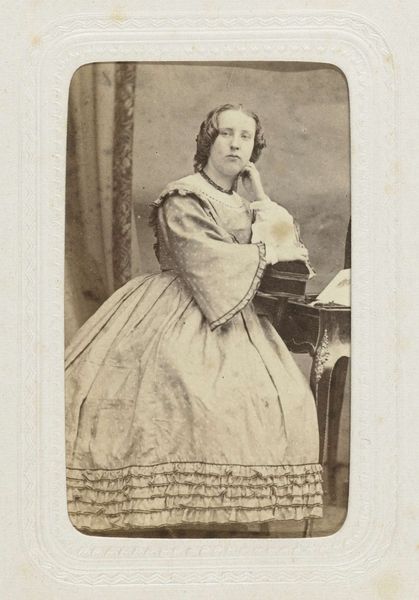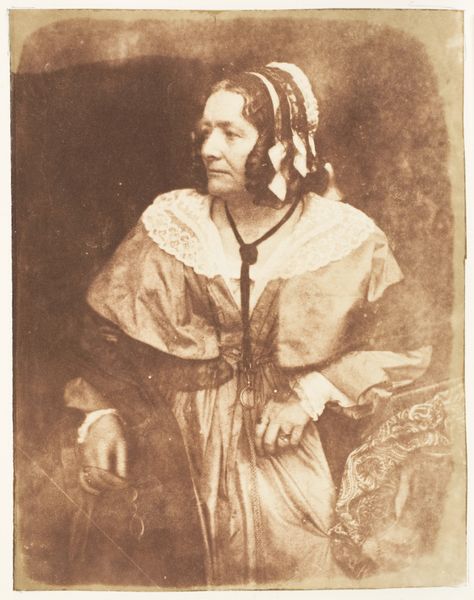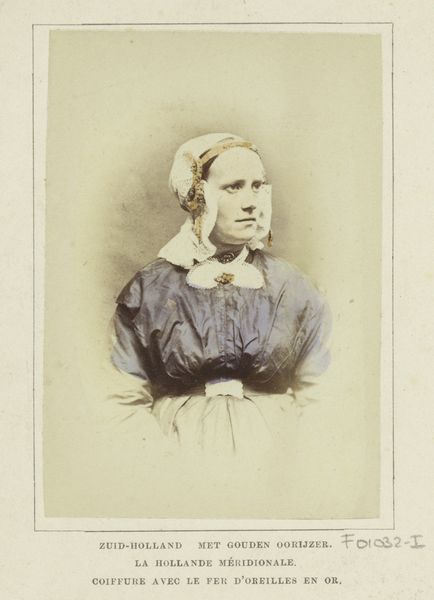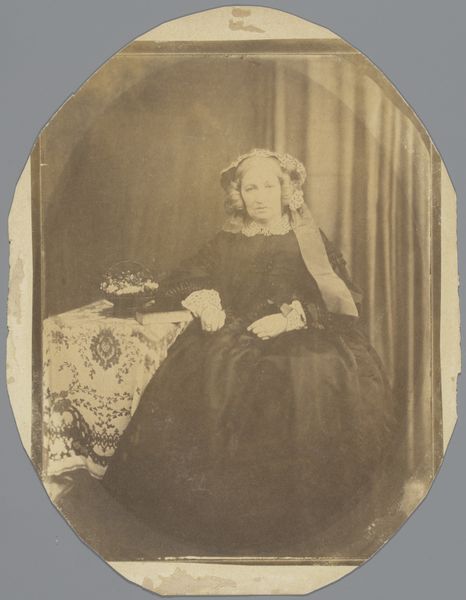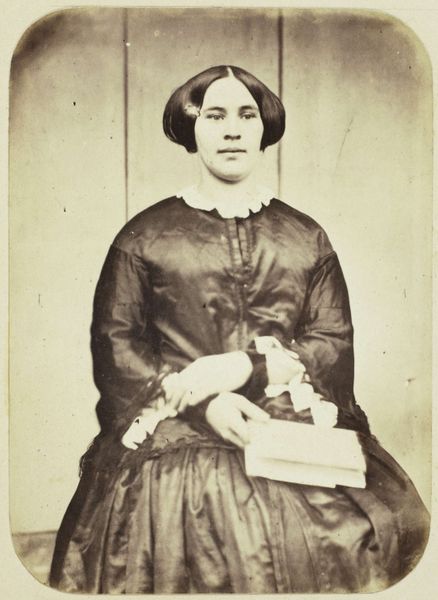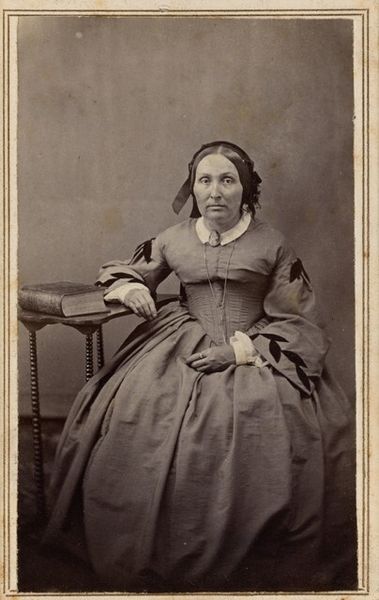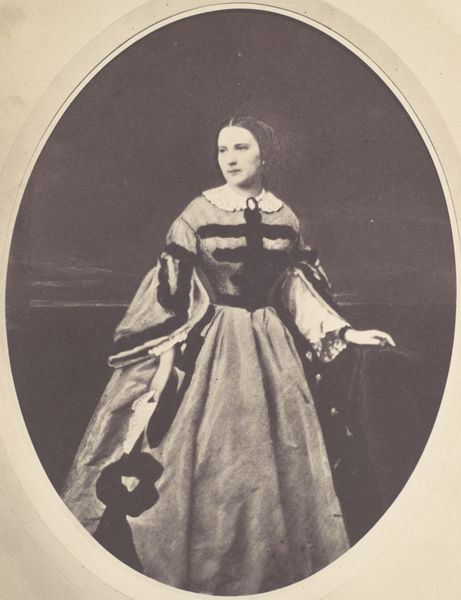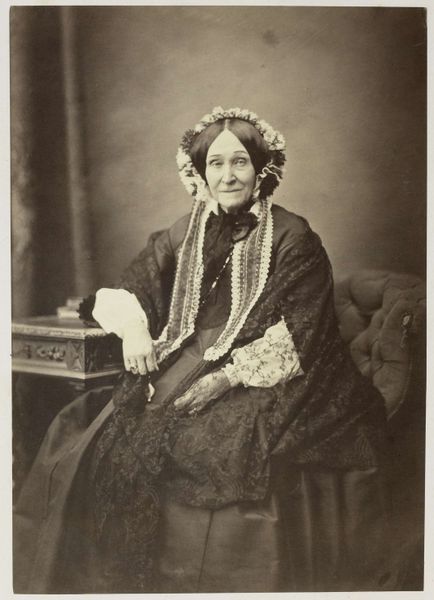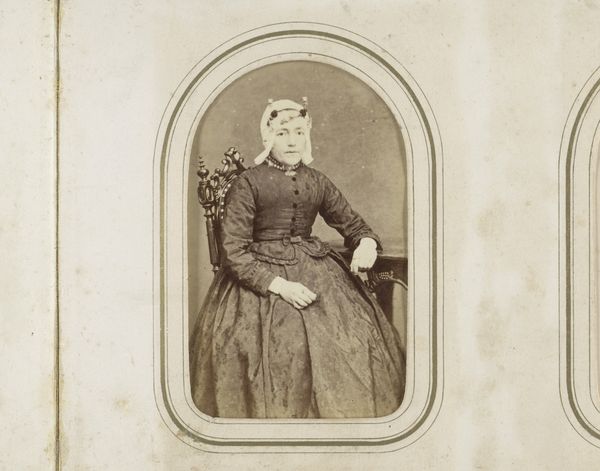
photogravure, photography, gelatin-silver-print
#
portrait
#
photogravure
#
photography
#
historical photography
#
romanticism
#
gelatin-silver-print
#
realism
Dimensions: 7 15/16 x 5 7/8 in. (20.16 x 14.92 cm) (image)
Copyright: No Copyright - United States
Curator: David Octavius Hill created this arresting image, "Mrs. Rigby," around 1845. What's your initial take on it? Editor: The somber tones immediately struck me. It has an almost painterly quality, reminding me of lithographs from the same era. I am interested in the materiality that conveys her somber mood. Curator: Exactly! It's a fascinating example of early photographic techniques and speaks volumes about Victorian society’s constructions around gender and aging. I’m drawn to her assertive gaze, quite unusual for women's portraits then. Editor: It certainly begs the question: who *was* Mrs. Rigby? This calotype printing process was new, but resource-intensive. Was she of elevated status, one wonders, afforded access to emerging technology and perhaps patronage networks? The delicate lace on her cap is an interesting class signifier as well. Curator: Precisely! Understanding access to emerging technologies during this period allows us to dissect those patronage networks, reflecting how gender and class intersect. Moreover, the choice of attire reflects how women strategically used material objects for self-expression within restricted Victorian norms. Her almost defiant posture can be seen as subversive given those confines. Editor: Looking closely, I see the way light interacts with the fabric. How much manipulation was required to capture this detail? Those choices reveal not just artistic intent, but also the limitations – and potential – of this cumbersome early photographic method. I want to get my hands on the original! Curator: I think understanding Mrs. Rigby and photographic innovations enriches our appreciation for representations of women throughout history. These aren't passive objects; they actively shaped and challenged Victorian expectations. Editor: And in the end, by reflecting on the laborious, often collaborative effort embedded within it, "Mrs. Rigby" invites us to consider both the object and the system in which art and identity are constructed. Curator: Agreed. These types of images provide critical narratives that resist traditional male perspectives prevalent in history books. We might think about who doesn't have access. Editor: True. Materially grounded inquiries can transform static assumptions into productive avenues of inquiry, bridging history, identity, and visual culture.
Comments
No comments
Be the first to comment and join the conversation on the ultimate creative platform.
